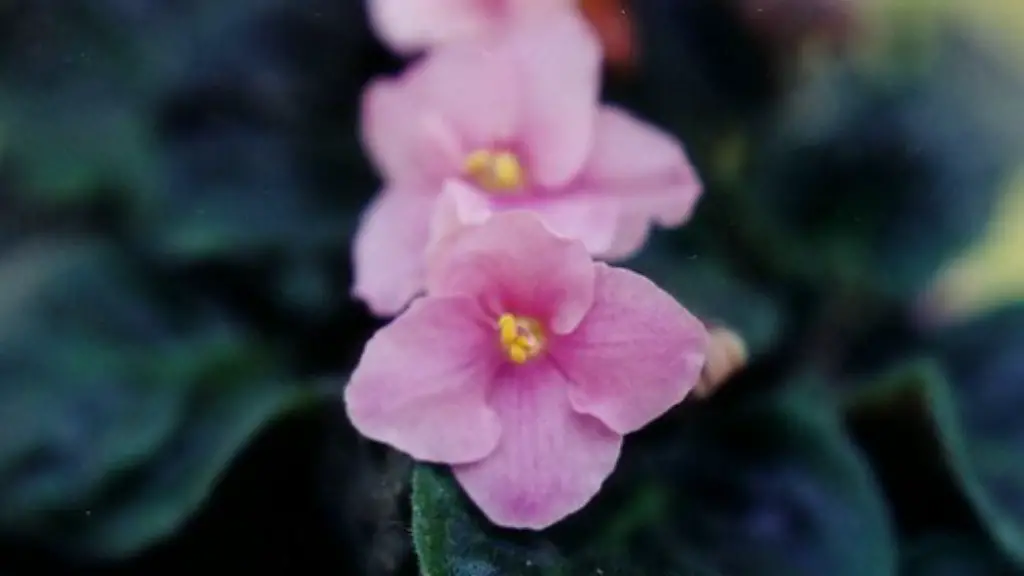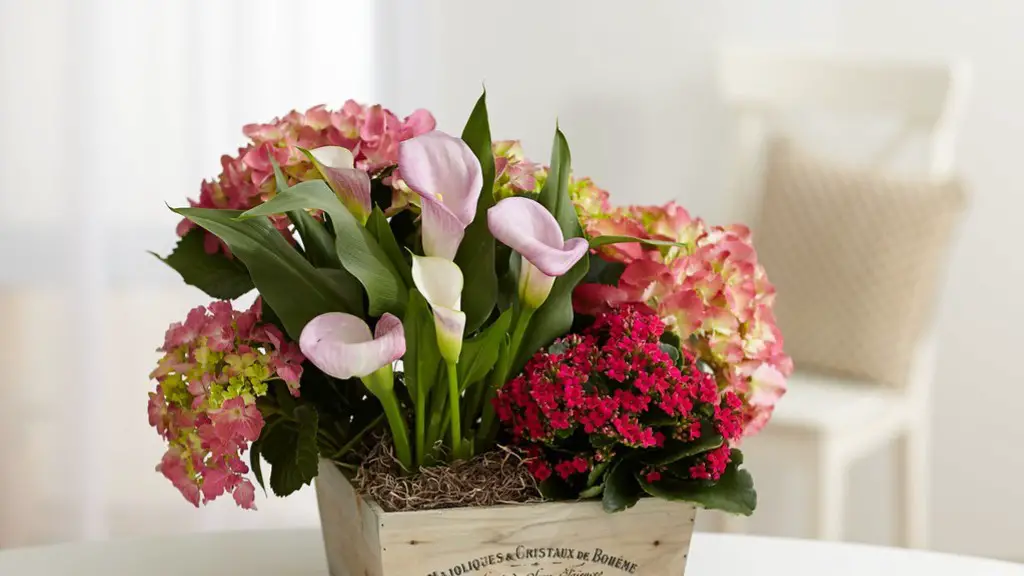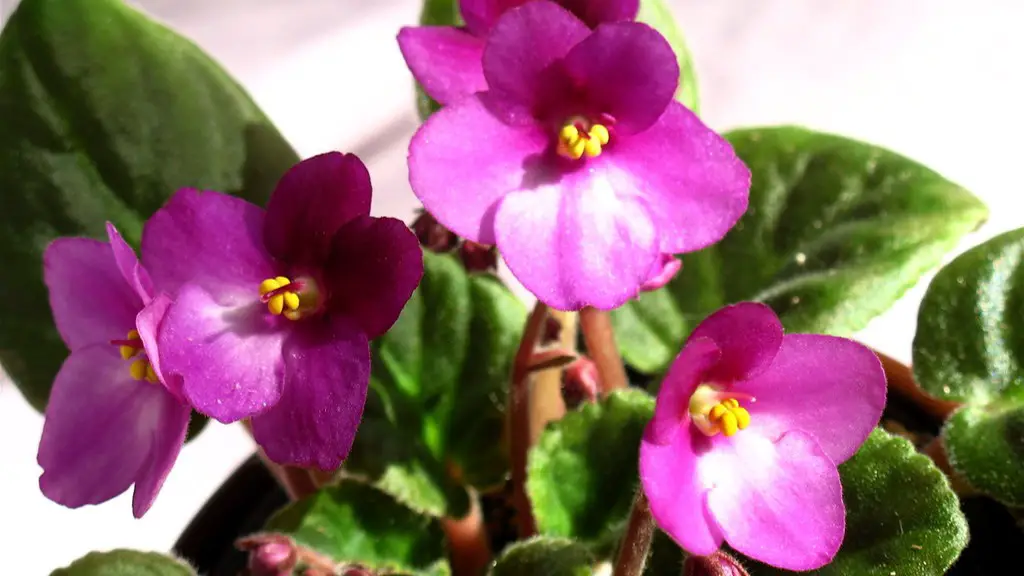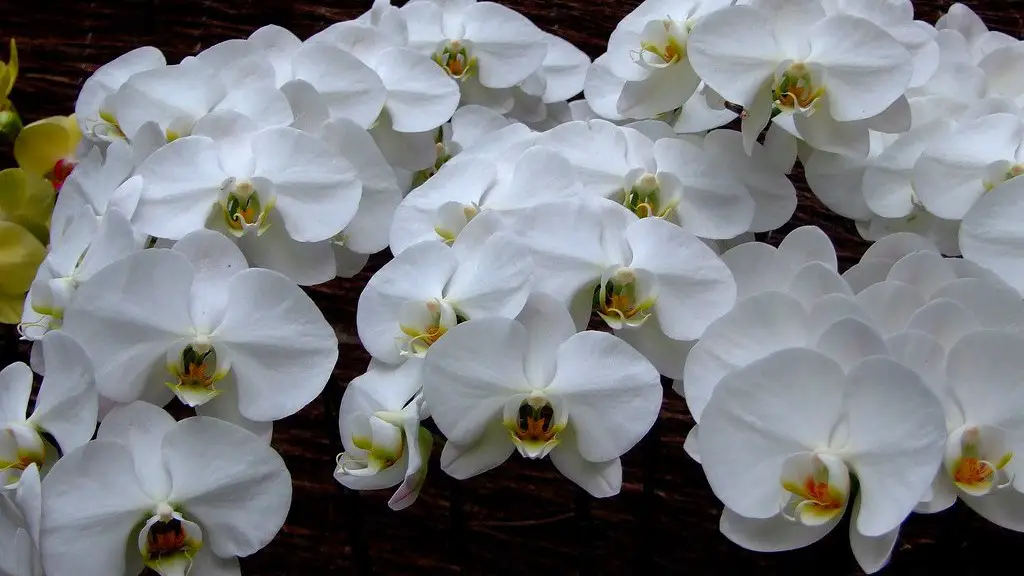African violets are a type of genus Saintpaulia that is native to Tanzania and Kenya in Africa. They are common houseplants and are known for their beautiful, violet flowers. Although they are not true violets, they are in the same plant family, Violaceae. African violets can be propagated by seed, leaf, or stem cuttings.
african violets need well-drained, loose soil that is high in organic matter. They also require bright, indirect light and moderate humidity. Water the plants when the soil is dry to the touch, and fertilize every two weeks with a half-strength solution of an all-purpose fertilizer. To encourage blooming, pinch back the tips of the plants every two to three weeks.
How do you get an African Violet to bloom?
Indoor plants need bright, indirect sunlight in order to thrive. Too little sunlight will cause them to stretch for the light and produce few or no flowers, while too much sun can burn the leaves. An east-facing window is ideal, especially with a sheer curtain to block the sun’s harshest rays. They also need eight hours of darkness every night in order to stay healthy.
African violets are one of the few flowers that can bloom nearly year-round. If you are able to provide the correct conditions, expect your African violets to bloom 10-12 months each year. Each bloom lasts for about 2-3 weeks.
Why isn’t my African Violet blooming
If your African violet is not blooming, it is likely because it is not getting enough light. African violets need indirect sunlight, as direct sunlight can burn the leaves. Choose a north- or east- facing window for best results. Keep plants away from cold glass and rotate the pot once a week so all leaves receive light.
Epsom salts are a great way to provide your plants with essential magnesium and sulfur. These two minerals are needed to produce beautiful blooms and healthy foliage. To use, mix one and a half teaspoons of Epsom salts in a quart of tepid water and swirl to dissolve. Water your African violets (below the leaves) with this solution once a month.
Should you pinch off African violet flowers?
If you have success getting your African Violet to bloom, be sure to pinch or deadhead spent blooms. This allows the plant to continue to put energy into creating more buds/blooms and beautiful foliage.
African violets are known for their beautiful flowers, and with the right growing conditions, they can bloom frequently. With proper care, a healthy African violet can produce several flowers at once that last for several weeks. If you remove the old flowers (known as disbudding), new flowers should bloom within 6 to 8 weeks.
How often should African violets be watered?
A wicking system is a great way to make sure your African violets are never over watered. With this system, you only need to water once a week and the plant will be completely dry between waterings.
If you’re lucky enough to have an African violet that’s been passed down to you, or if you’ve had one for many years, it’s important to know how to take care of it properly. That includes repotting it every few years.
African violets are different from other houseplants in that they have a very long lifespan. They can last up to 50 years if they’re well-cared for. That’s why it’s so important to repot them every few years. It helps them stay healthy and happy for a long time.
If you’re not sure how to repot an African violet, don’t worry. It’s not difficult. You just need to be gentle with the plant and have the right materials.
Here’s what you’ll need:
-A pot that’s one size larger than the current pot
-Potting mix for African violets
-A sharp knife
To repot an African violet, start by watering the plant well. Then, carefully remove it from its current pot. This is where being gentle is important. African violets have fragile roots, so you don’t want to damage them.
Once the plant is out of its pot,
Can you use Miracle Grow on African violets
African violets grow best in a slightly acidic environment with well-drained soil. Miracle-Gro® Indoor Potting Mix is a specially formulated potting mix that provides African violets with the perfect growing environment.
African violets are susceptible to crown rot, so it is important that the crown (the section of the plant at soil level) is not saturated with water.Water on the foliage may cause permanent leaf spotting. Use water that is room temperature and DO NOT mist the foliage.
What do Overwatered African violets look like?
If your African Violet plant has been over-watered, the soil will retain too much water. This retention of water will cause the leaves and/or leaf stems to turn soft, limp or mushy.
If your African violet is starting to look like a palm tree with a bare stem and all the leaves at the top, it’s time to do some surgery. This means that you need to replant your African violet in a pot that is just large enough to accommodate its root ball. African violets prefer to be root bound and usually won’t flower until they are, so don’t just do the typical move into a larger pot. By replanting your African violet in a pot that is just large enough for its root ball, you will encourage your plant to flower.
Are coffee grounds good for African violets
Coffee grounds are slightly acidic and contain nitrogen, which helps plants grow healthy foliage. Occasionally sprinkling used coffee grounds on top of your African violet potting soil can be good for the plant.
To encourage blooming, it is important to keep the soil moist to dry, and allow the soil around the roots to dry out before watering. Water from the bottom with room temperature water by placing the plastic grower’s pot in water, and allowing the plant to absorb the water (not more than 30 minutes).
Is baking soda good for African violets?
If your African violets are covered in powdery mildew and don’t seem to be improving, try spraying them lightly with a mixture of 1 teaspoon (5 ml) of baking soda in 1 quart (1 L) of water. You can also spray the air around the plant with Lysol or another household disinfectant, but be careful not to get too much spray on the leaves.
It’s important to choose a pot that’s just the right size for your African violet plant. If the pot is too large, the plant will become leggy and sprawling. If the pot is too small, the plant will become pot-bound and its roots will start to crowd. The best way to find the perfect pot is to ask your local nursery or gardening center for advice.
Conclusion
African violets are very easy to flower. All you need is a little bit of patience and the right conditions. Here are the steps to follow:
1. Water your African violet regularly, but don’t allow it to get soggy. The best way to water is to use a self-watering system, or to water from the bottom up.
2. Place your African violet in a bright spot, but out of direct sunlight.
3. Apply a high-quality African violet fertilizer once a month.
4. Deadhead any spent blooms to encourage new growth.
5. With just a little bit of care, your African violet will soon be covered in beautiful blooms!
The African Violet is a beautiful and popular plant that is easy to grow. With a little care, your African Violet will flower abundantly.





